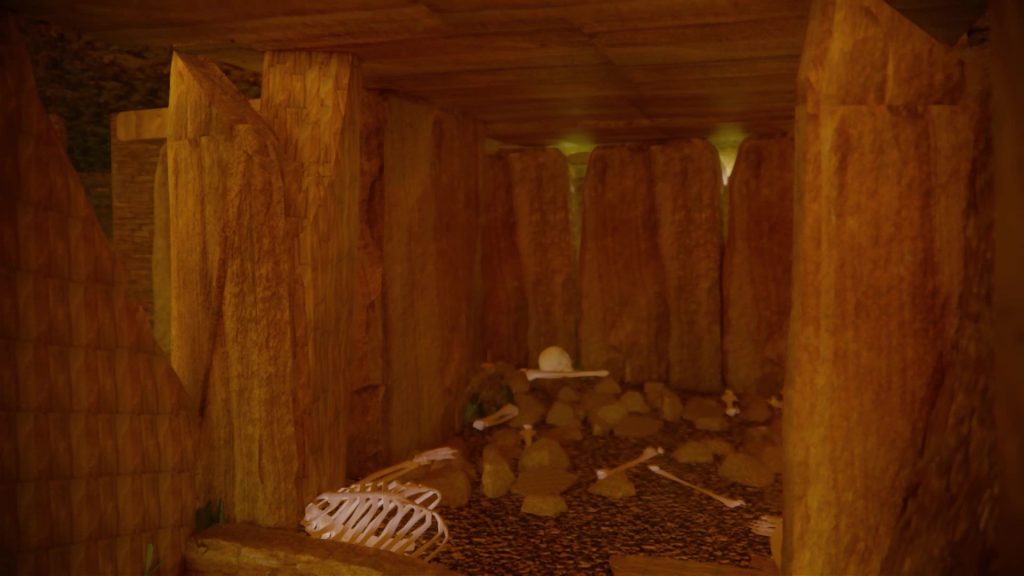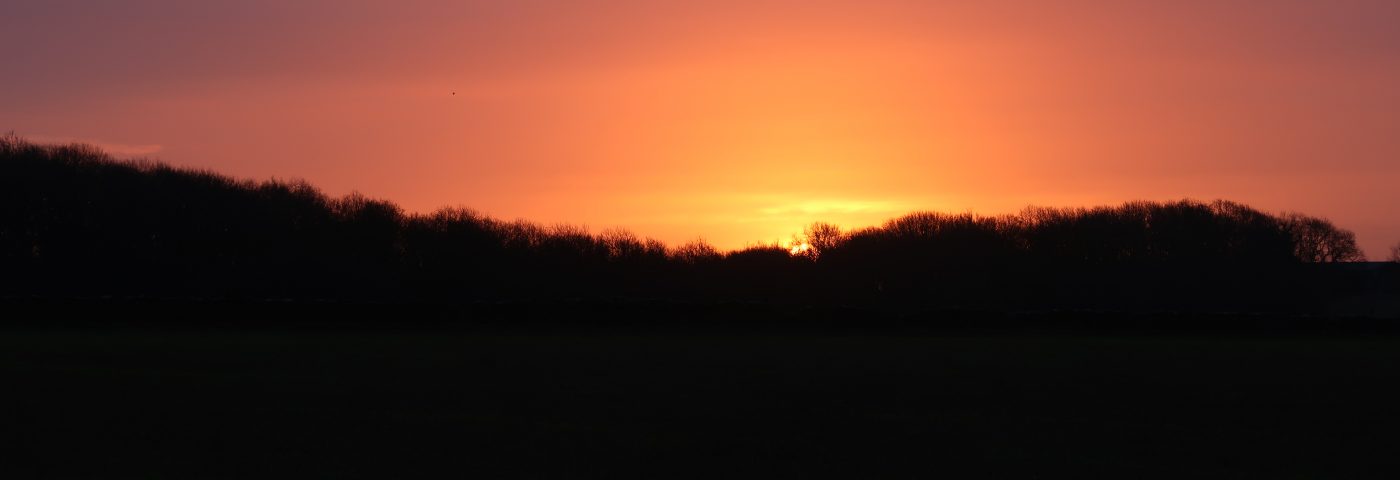Earth-bound, Wind-bound
at Hazleton North long barrow
by Adam Horovitz
Earth binds the bones
beneath your feet.
Pig skull, cow skull,
human femur.
Like words on a page
they lie under grass,
ready for the world
to reclaim lost voices,
remember what was said.
Move out of the dark,
away from cold shadows
onto the bright hilltop.
The world opens
beneath you like a river
to windrush, scribbled
horizon line, the endless
light of a morning
sheared from its place in time.
In the deep folds of the land
time moves through soil
like worms, reducing matter
down to aerated basics.
Bonescape, stoneyard,
book to be read by gentle hands.
On this high hill, histories whisper.
Build into a story that waits,
wind-bound, for willing ears.

Hazelton North long barrow reconstruction
a soundscape from Hazleton North
by Chris Cundy
A pair of long barrows once stood in this field. They were built 5’700 years ago by early farming communities and functioned as communal tombs. The Hazleton long barrows were covered by earth mounds and had intricate stone walls that curved round into hollowed alcoves known as forecourts. The monuments may well have been adorned with objects and offerings, perhaps even pig skulls. Inside, these monuments contained family chambers where the bones of the dead were brought and scattered. Animal bones, flint cores and ceramics were also found in the chambers along with a few other tantalising objects which provide clues about their occupants. Many of these items are on display in the Stone Age to Corinium gallery.
My first visit to Hazleton North took place in February 2022. There’s not much to see here now, just wide open farmland surrounded by tracks and quiet tree lines, but my senses have been heightened. I’m here at sunrise and I share the morning with wild hare, brambling, and red deer. I’m also in the company of my friend Brendan who took part in a major excavation here in 1979 when he was just fifteen, taken under the wing of a team of local archaeologists who were concerned the monument was slowly disappearing into the landscape as a result of industrial ploughing and natural corrosion.
The frosty soil reveals a scattering of loose stones but there’s no suggestion of where the mound is. Brendan knows this place instinctively and I amble with him across the field to whereabouts we think it must be. Suddenly I feel a shift in the contours around me and a frosty outline appears from out of the half light. A strange shape is cast across the old barrow ground. This must be the place.
In the soundscape I’ve recorded wind in the surrounding trees and birdsong in the field. I combined this with a slow moving low melody played on two bass clarinets. You can also hear us walking across the field, and there are other sounds here too; as we stood on the barrow ground we noticed a cluster of brown beech leaves circling in the wind around us. They have been slowed down in the recording to bring out an almost flint-like sonority. There’s also a constant murmur, a simple Helmholtz effect caused by the wind as it sang across the hollow of an open fence post in a field a few miles away. Adam’s poem is a reflection on this place and of the stories held within the landscape.
© 2022 Adam Horovitz & Chris Cundy











